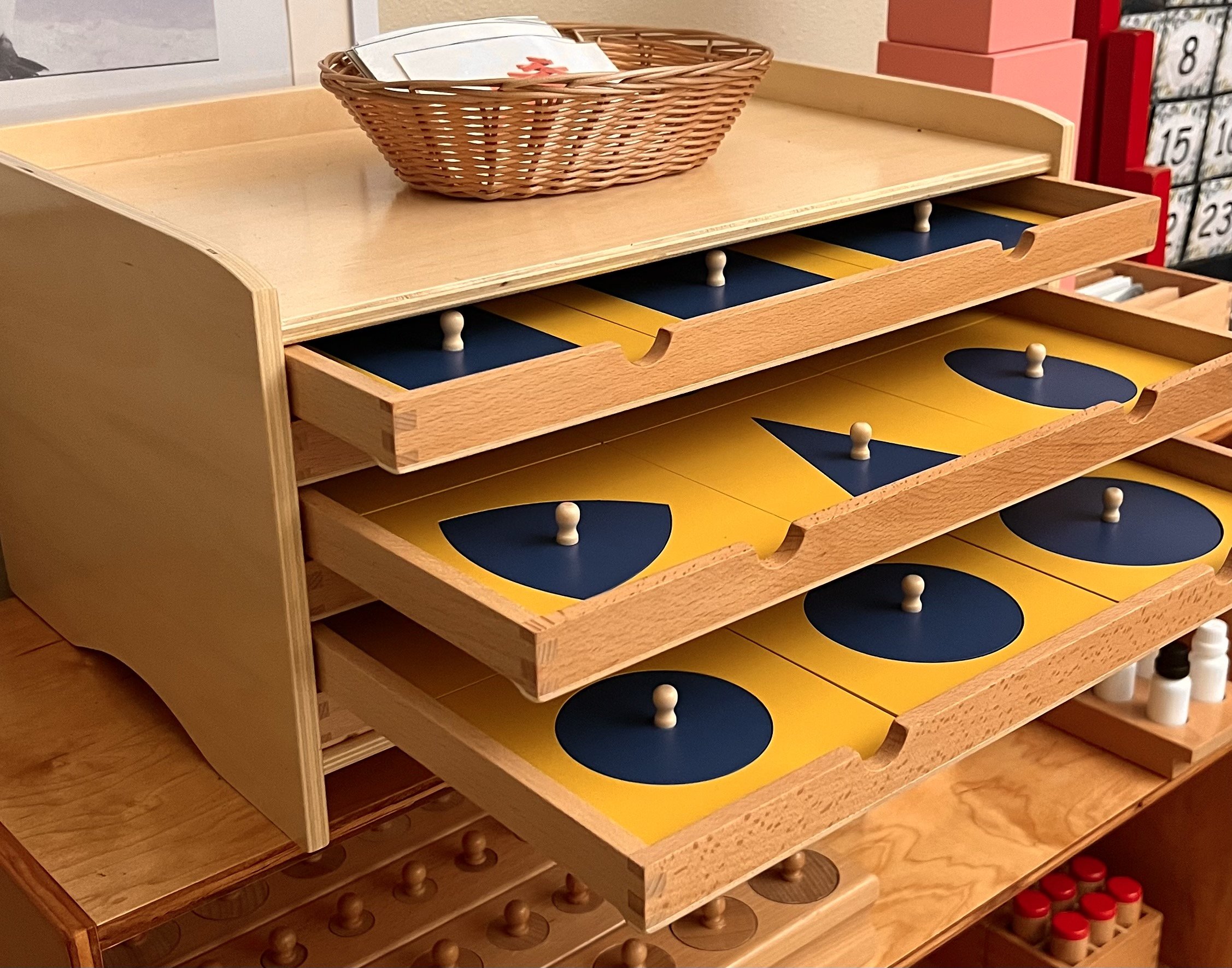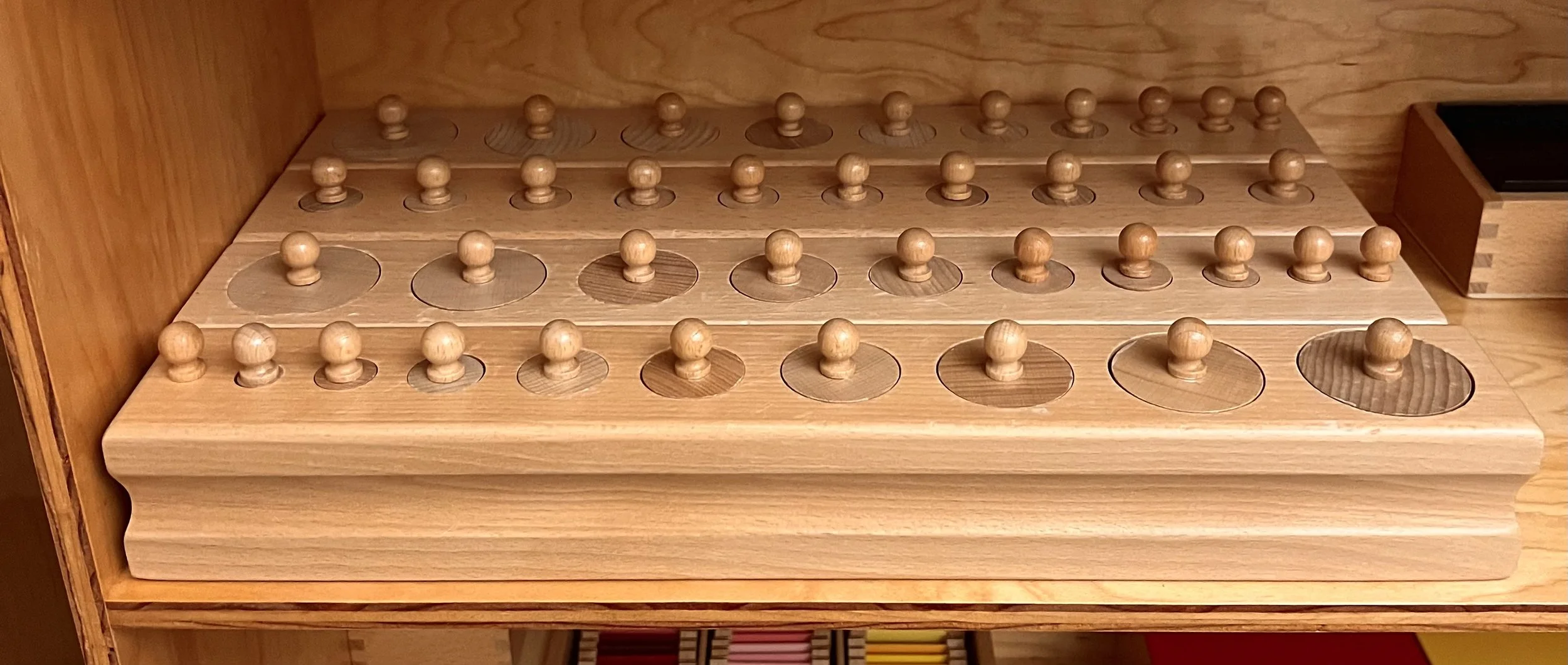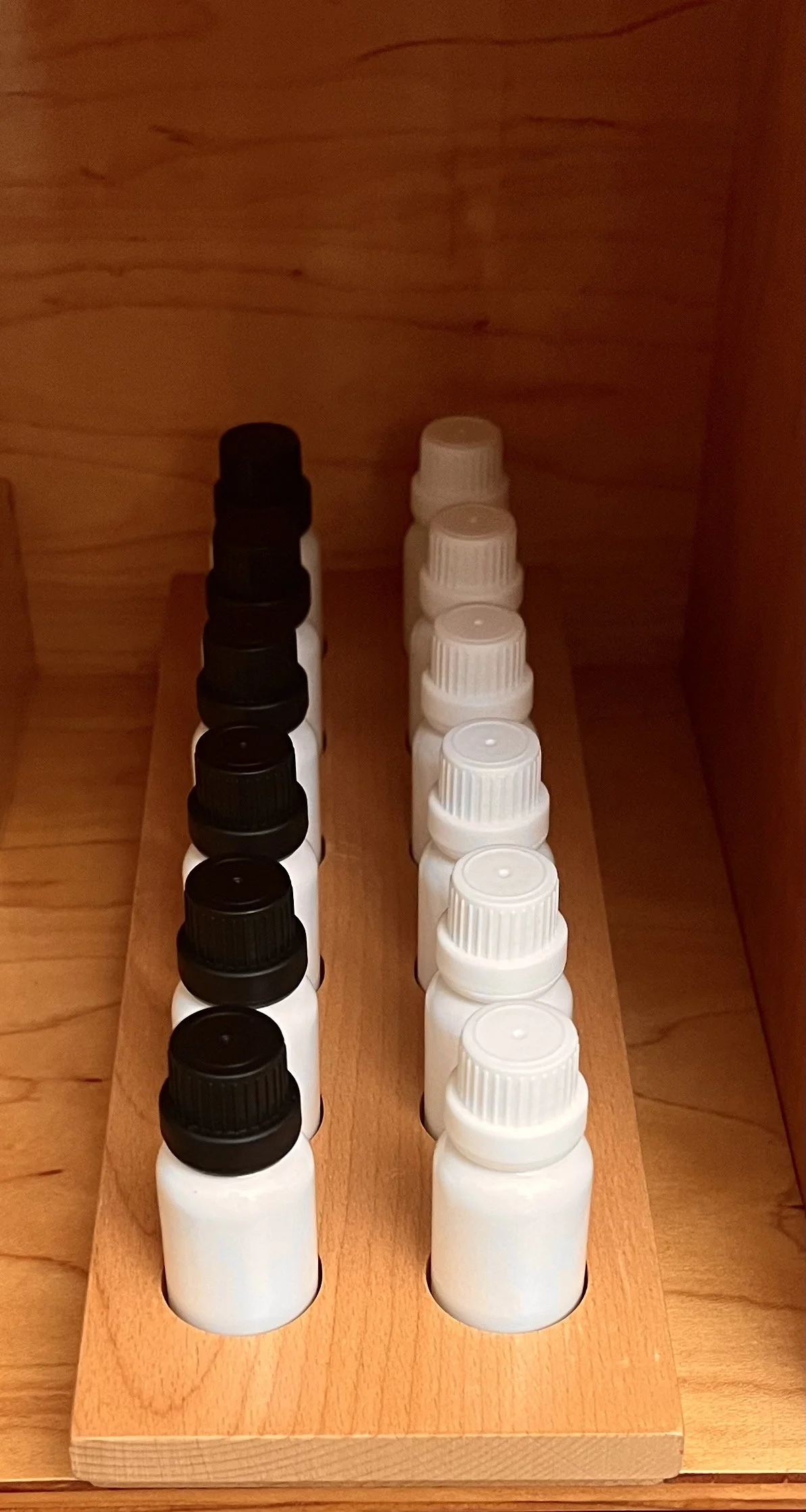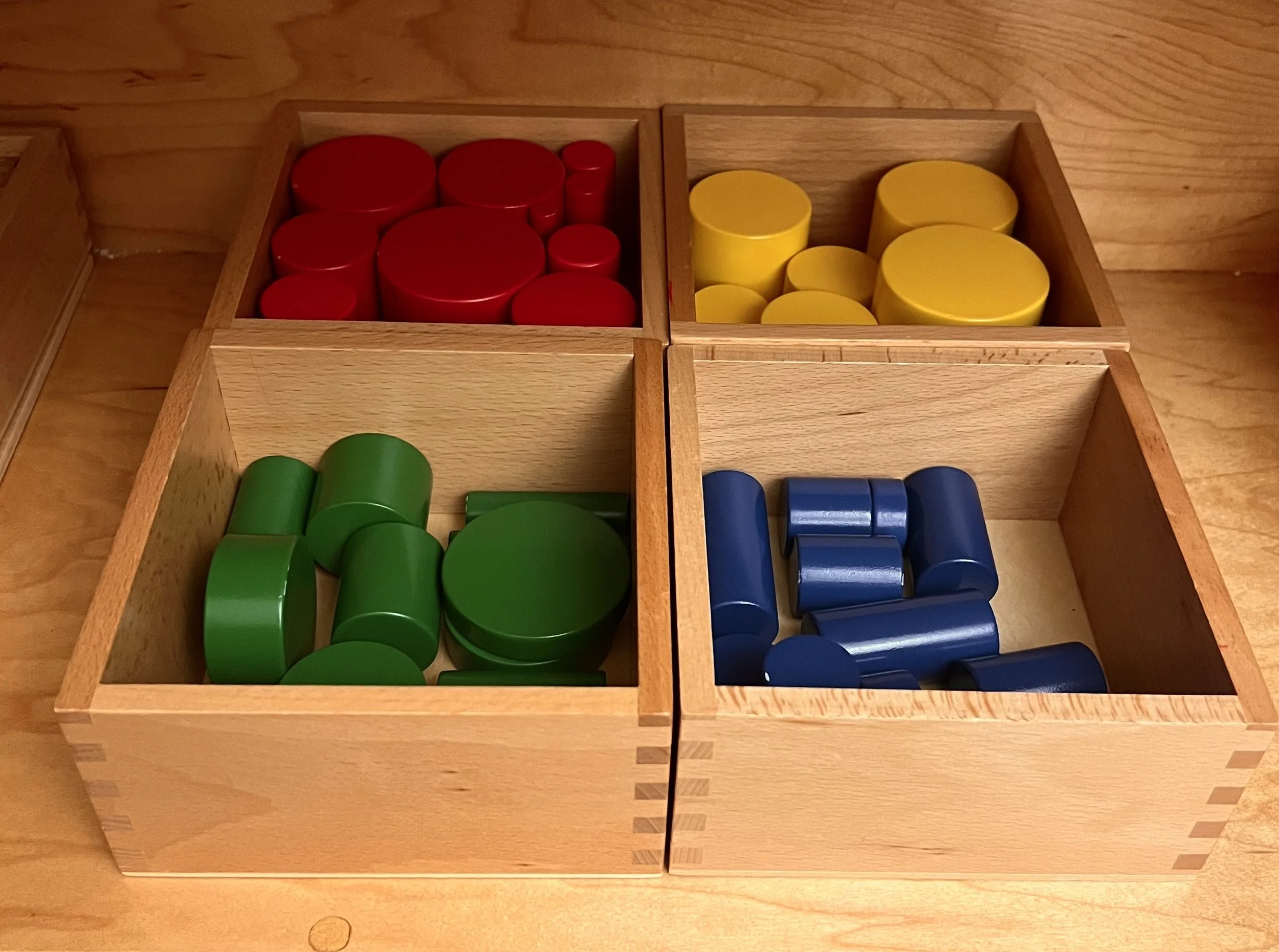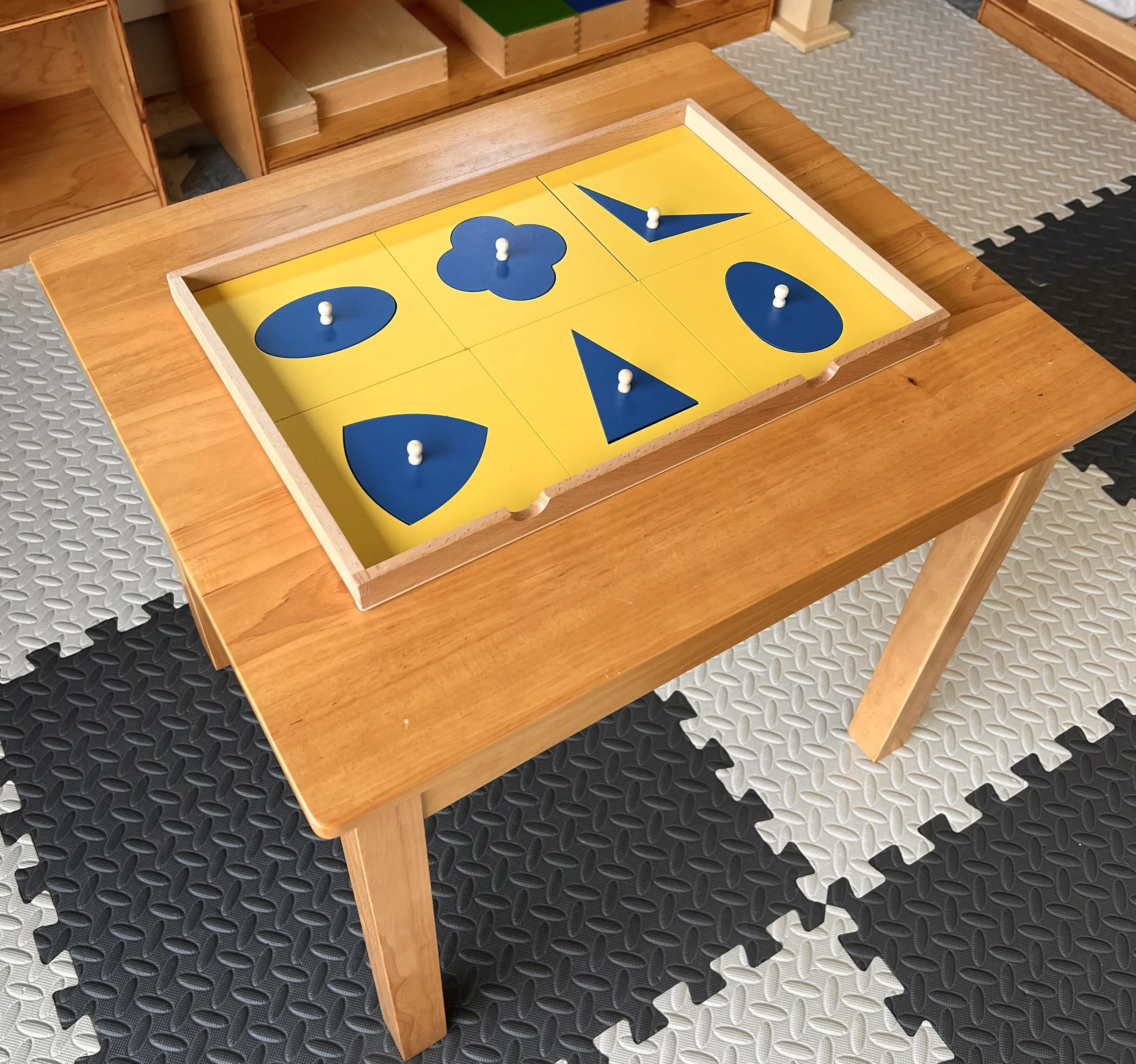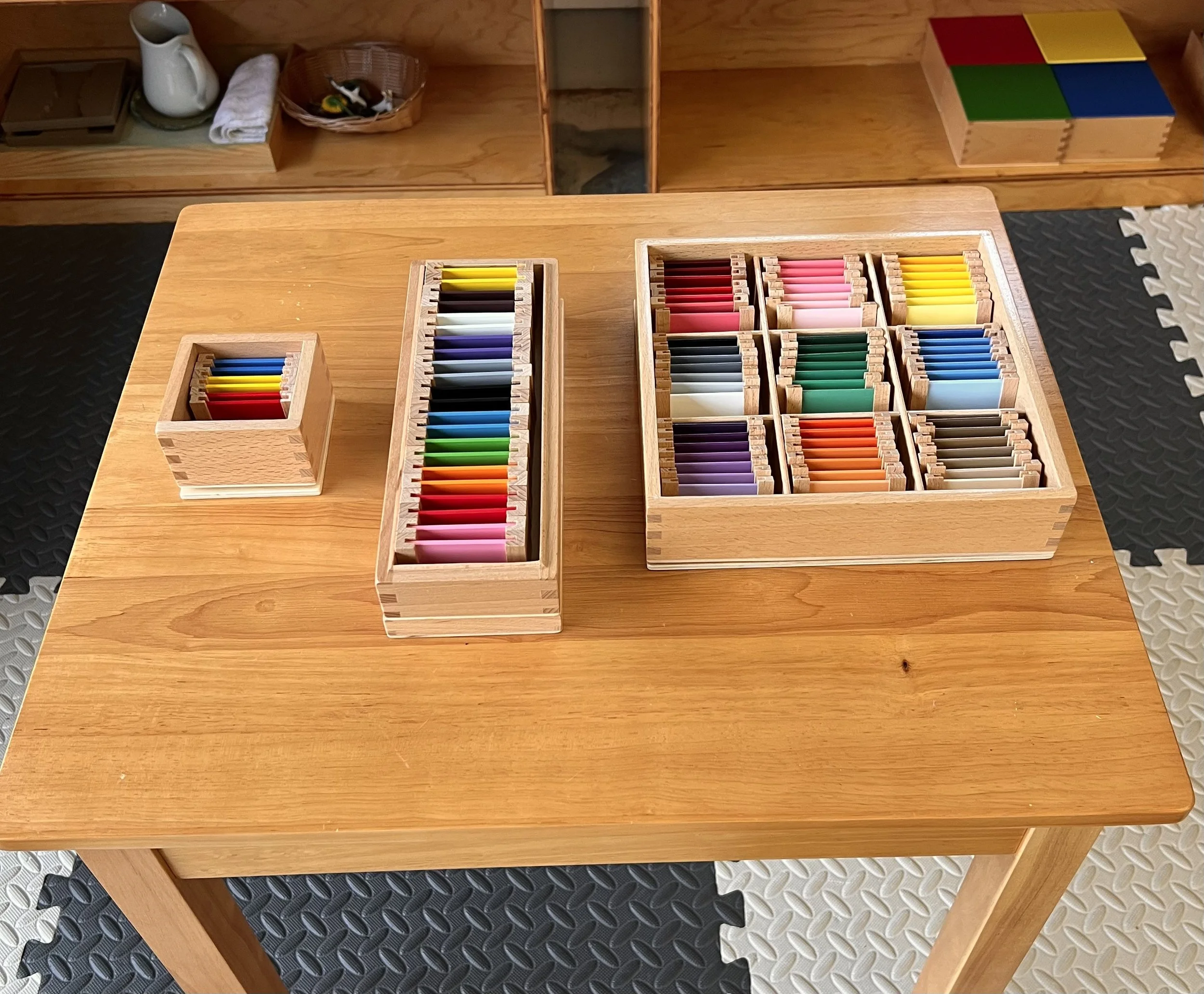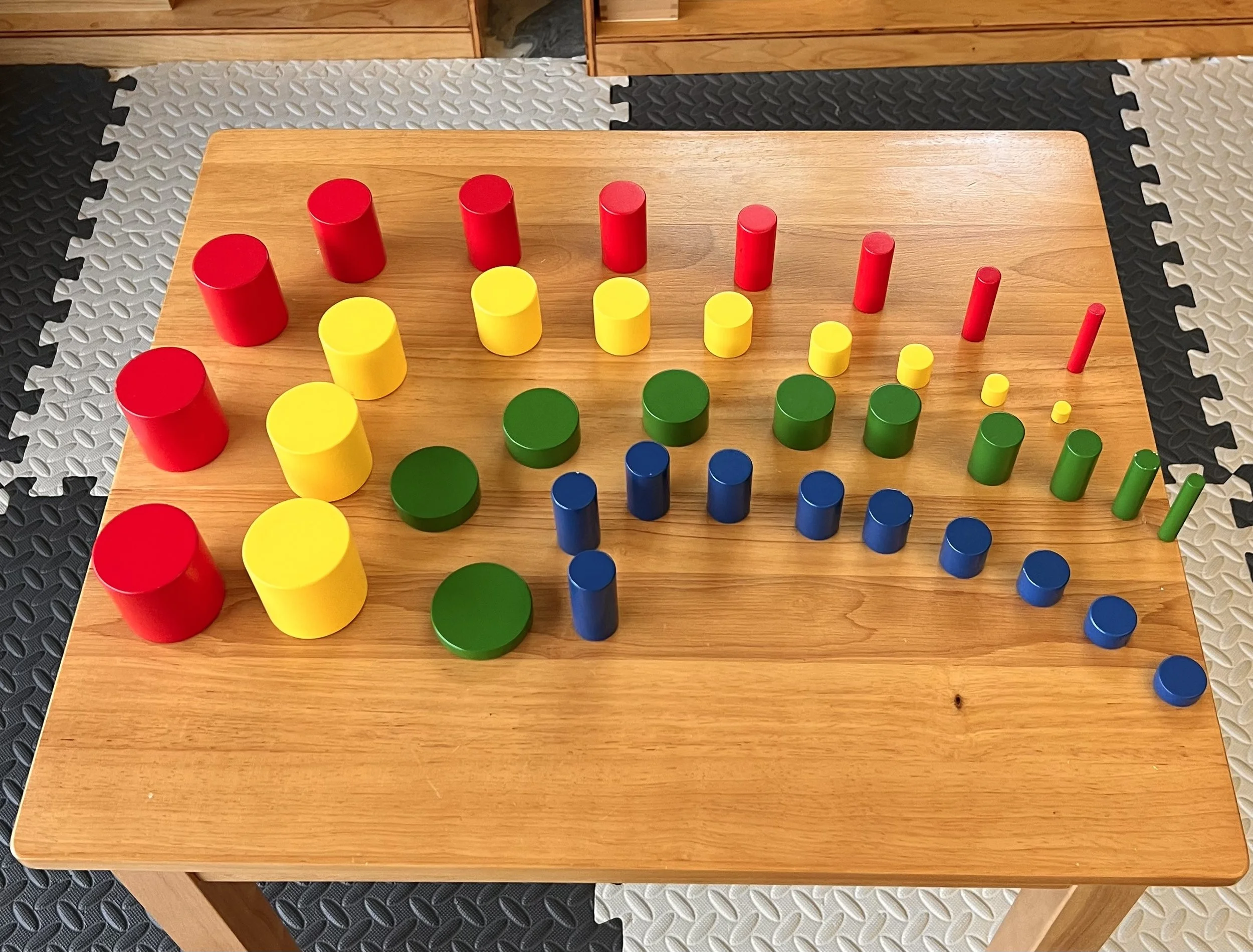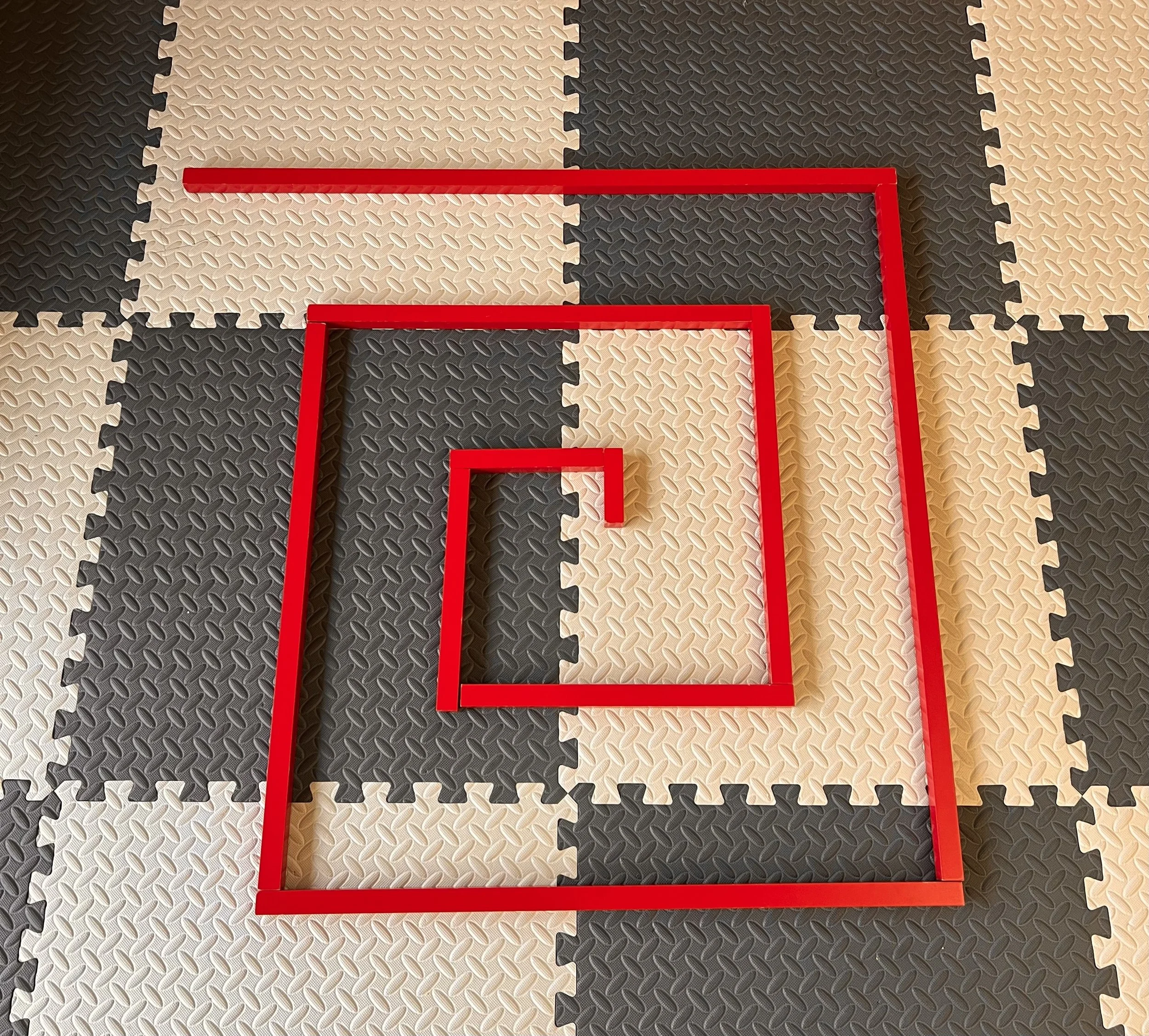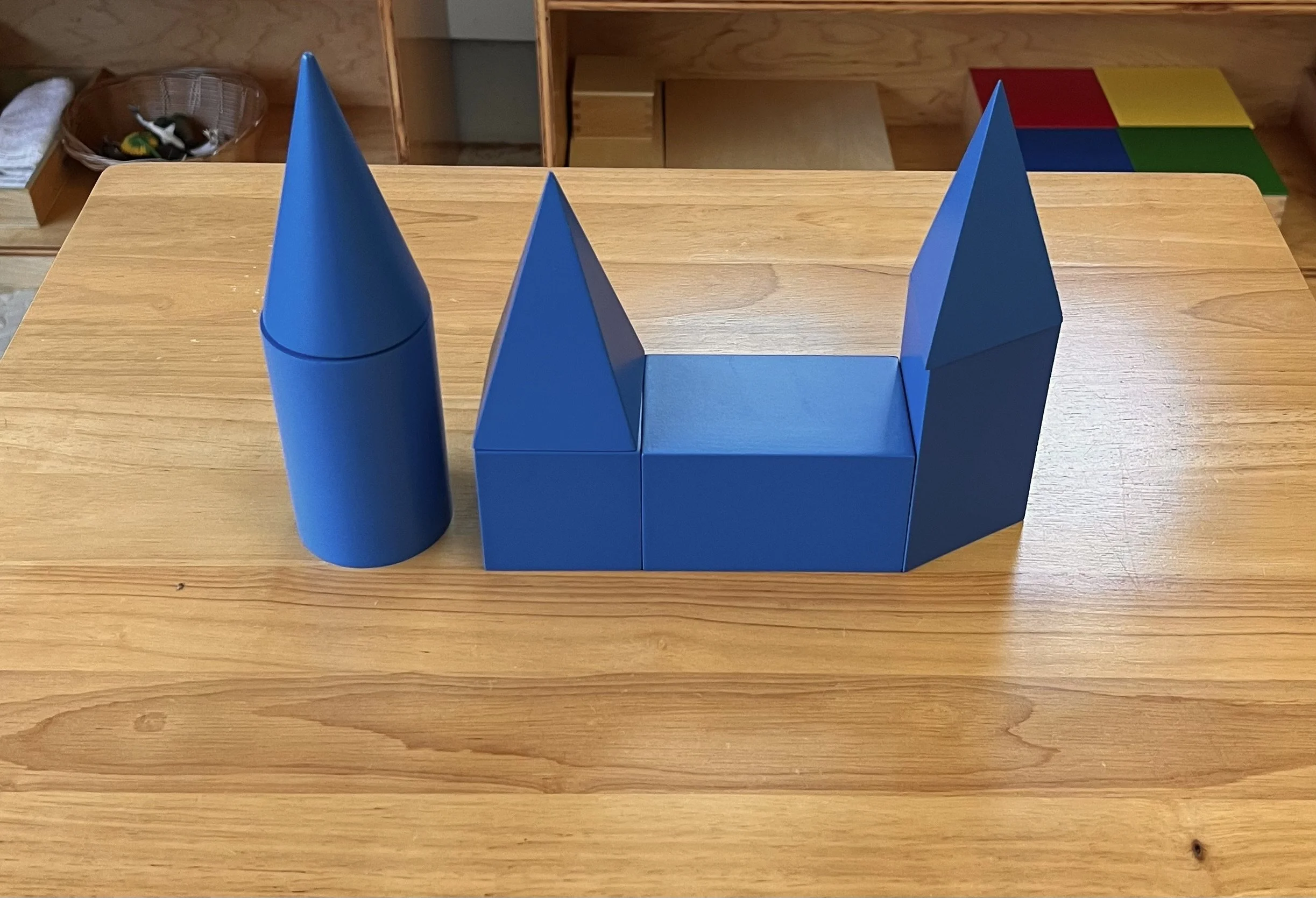Sensorial
At Growing Minds Montessori Academy, we believe that learning begins with the senses. Our sensorial activities are carefully designed to help children explore, discover, and understand the world around them through touch, sight, sound, smell, and movement. Children engage with materials such as the color tablets to discern subtle differences in shades, sound cylinders to explore varying pitches, geometric solids to develop spatial awareness, and textured tablets to refine tactile perception.
By experiencing these hands-on, self-correcting activities, children sharpen their senses, build concentration, and lay a strong foundation for reading, math, and critical thinking. Every activity is designed to spark curiosity, nurture independence, and encourage a lifelong love of learning.
In our Sensorial area, children explore and learn through hands-on activities that engage their senses, helping them to discover the world, refine their perception, and build a strong foundation for future learning. A sample of these activities are described below.
In our classroom
The Geometric Cabinet introduces children to place geometry in a hands-on way, helping them recognize, name, and classify shapes. Through repeated manipulation, children refine visual discrimination, strengthen the pincer grasp, and build the foundation for later work in geometry and mathematics. It also nurtures order, concentration, and an appreciation for patterns in the world around them.
The Pink Tower refines a child’s sense of dimension by isolation the concept of size in three dimensions — height, width, and depth. By building it vertically or arranging it horizontally, children explore sequencing, comparison, and the base-ten relationship, all of which support later understanding of mathematics. It also introduces early concepts of geometry, volume, and area, while indirectly preparing the mind for algebraic thinking through patterns and gradation.
The Knobbed Cylinders are a set of four blocks, each isolating a different dimension: height, diameter, or both. By fitting the cylinders back into their sockets, children refine visual discrimination, fine motor control, and the pincer grasp. Working with all four blocks allows for more complex exploration, challenging problem-solving, sequencing, and comparison skills. This material also builds a strong foundation for mathematics by introducing the concepts of size, gradation, and dimensional relationships, while preparing the mind for geometry, algebra, and precise measurement.
The Color Tablets progress through three sets, beginning with primary and secondary color recognition, and then extending to color grading and refinement of subtle shades. Children sharpen their visual discrimination and vocabulary while also developing aesthetic awareness and an appreciation for beauty. Beyond pairing and grading, the tablets can be arranged into creative designs such as flowers, patterns, or symmetrical arrangements, encouraging exploration of order, balance, and artistic expression.
The Knobless Cylinders consist of four sets of cylinders that vary in height and/or diameter. Unlike the knobbed cylinders, which offer blocks with sockets for control of error, these cylinders are free-standing, requiring the child to rely more fully on observation, reasoning, and self-correction, making the work more complex and engaging. Children can grade the cylinders within a set or combine all four sets to explore sequencing, seriation, and dimensional relationships, which also arranging them into creative patterns and designs.
The Red Rods isolate the quality of length, helping children refine visual perception, coordination, and sequencing skills. By grading the rods from shortest to longest, children build a foundation for mathematical concepts such as measurement, number value, the decimal system, and even the concept of addition and subtraction through combining lengths. Beyond linear grading, the rods can also be arranged into creative designs, such as building a maze for walking or other patterns on the floor, encouraging spatial awareness, problem-solving, and imaginative exploration.
Baric Tablets
Thermic Tablets
The Baric Tablets and Thermic Tablets both refine the child’s tactile sense, however each isolates a different quality. The Baric Tablets develop sensitivity to weight, training the hand and mind to distinguish subtle differences in heaviness between each of the three types of wooden tablets. The Thermic Tablets, on the other hand, heighten awareness of temperature, helping children notice contrasts in warmth and coolness between various materials such as cork, glass, styrofoam, metal, quartz, and wood. Together, these materials cultivate a refined sense of touch, concentration, and careful observation, preparing the child to interact more attentively with the physical world.
Smell Bottles
Sound Cylinders
The Smell Bottles and the Sound Cylinders each focus on developing a specific sensory skill. The Smell Bottles refine the sense of smell, encouraging children to identify and differentiate between a variety of scents, while the Sound Cylinders strengthen auditory perception, training the ear to notice subtle differences in pitch and tone. Both materials enhance concentration, memory, and careful observation, helping children engage more fully with their environment.
The Geometric Solids introduce children to three-dimensional shapes, helping them recognize and name each solid while exploring its faces, edges, and vertices. Handing and comparing the solids develops spatial awareness, fine motor coordination, and an early understanding of geometric concepts such as volume, surface area, and shape classification. Beyond exploration, children can use the solids creatively to build structures like castles or patterns, fostering imagination while reinforcing math skills, problem-solving, and an appreciation for the relationships between shapes and space.
[(a + b)³] = (a³ + 3a²b + 3ab² + b³)
The Binomial Cube is a three-dimensional puzzle that allows children to explore algebraic concepts in a tangible way. Designed with colored cubes and prisms that fit together to form a larger cube, it visually represents the binomial algebraic equation [(a + b)³] = (a³ + 3a²b + 3ab² + b³). By assembling and disassembling the cube, children develop concentration, fine motor skills, and spatial reasoning, while gaining an early understanding of algebra, pattern recognition, and the relationships between parts and wholes in mathematics. This material bridges concrete manipulation and abstract mathematical thinking, making algebra accessible and engaging.


